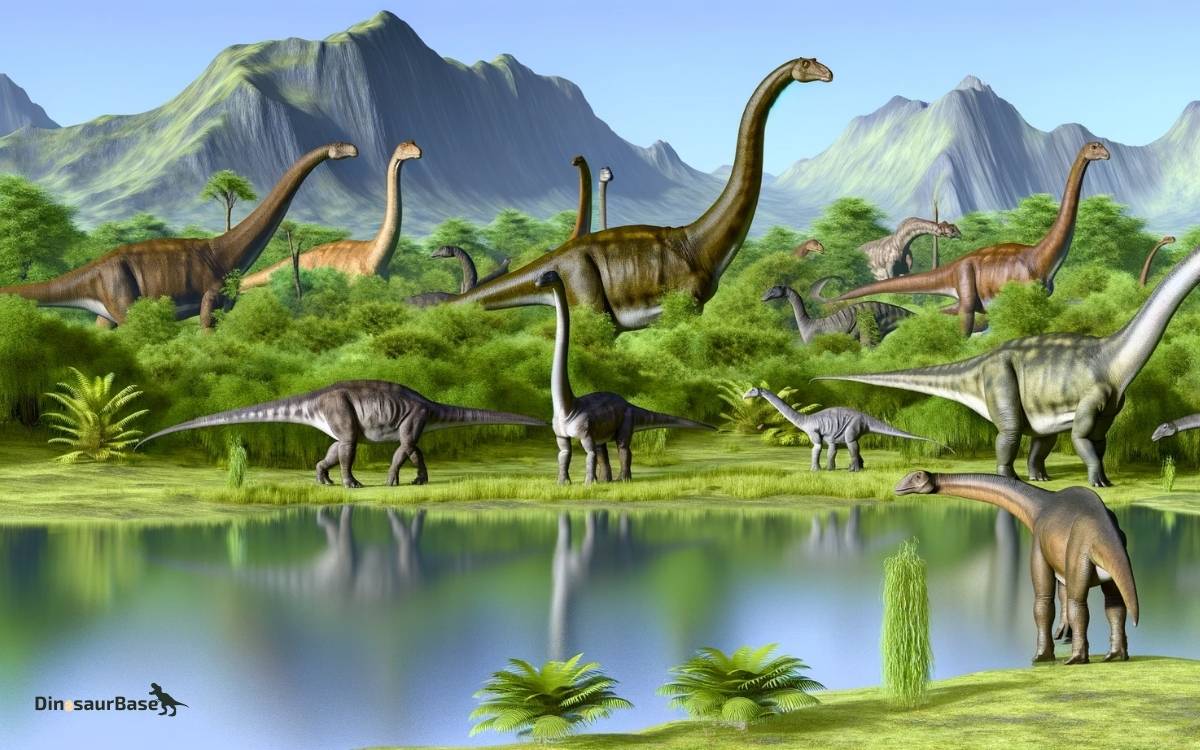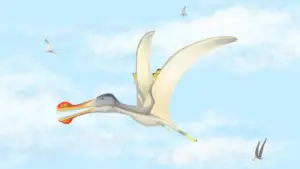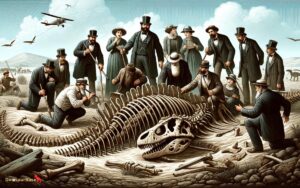How to Identify a Sauropod Dinosaur: A Beginner’S Guide
Identify sauropod dinosaurs by their long necks, tails, and four-legged stances. They typically have massive bodies and small heads.
Embarking on the exciting journey of fossil identification enriches our understanding of ancient life. Sauropod dinosaurs are among the most awe-inspiring creatures that once roamed the Earth.
These colossal herbivores dominated the landscape during the Mesozoic era, leaving behind a legacy etched in stone and time.
Exploring their fossilized remains offers a window into a world millions of years past. For beginners, recognizing sauropods is a foundational skill in paleontology, which leads to understanding Earth’s biological history.
This guide provides clear, straightforward tips to help you confidently differentiate sauropods from other prehistoric giants.
Dive into the past with ease and equip yourself with knowledge to identify these magnificent dinosaurs on your own.

Unlocking The Sauropod Secrets
Ever wanted to crack the code on ancient giants? Welcome to ‘Unlocking the Sauropod Secrets’.
Characteristics Of Giants
Sauropods tower over other dinosaurs. Here’s what sets them apart:
- Long Necks: Imagine a creature with a neck outdoing a giraffe’s. Sauropods’ elongated necks let them reach high vegetation.
- Massive Bodies: With bodies rivaling buses, these dinosaurs were truly monumental.
- Whipping Tails: Their tails could be as long as their necks, used perhaps for balance or defense.
- Pillar-like Legs: Think living columns. These supported their immense weight.
Bones imbued with air made their colossal size manageable.
The Sauropod Fossil Record
Unearthing sauropod fossils is like finding pieces to a prehistoric puzzle. Notable discoveries include:
| Specimen | Location | Significance |
|---|---|---|
| Diplodocus | North America | Known for its classic sauropod shape |
| Argentinosaurus | South America | Among the largest creatures ever to walk the Earth |
| Patagotitan | South America | Recently discovered, potentially the largest dinosaur |
Fossils give clues to their diets, habitats, and behaviors. The more we find, the more we understand these ancient giants.
Distinctive Features Of Sauropods
The massive creatures known as sauropods ruled the Earth during the age of dinosaurs. These gentle giants are easy to spot among dinosaur species.
Let’s explore the features that make sauropods stand out. Remember, size matters in the world of sauropods, and their body parts were no exception.
Necks That Reached The Sky
Sauropod necks were marvels of nature. To identify a sauropod, look upwards. These dinosaurs often had long, towering necks.
They could have more than 10 cervical vertebrae, which is more than most animals today. Some sauropods, like Brachiosaurus, had necks that stretched up to 9 meters (30 feet)!
Pillar-like Limbs
Sauropods had huge, column-like legs to support their weight. Study their legs closely. They resemble the mighty pillars of ancient temples, built to hold up something very heavy.
The four legs of sauropods were sturdy and often similar in length, contributing to their well-balanced stature.
Tails: Heavy Or Whiplike?
The tails of sauropods told two different stories. Some species had heavy, thick tails that dragged on the ground.
Others, like Diplodocus, had long, slender tails. Their tails were like whips and could have served as a defense weapon. To spot a sauropod, always check the tail – it’s the finishing touch on their impressive frame.
Sauropod Habitats And Diets
Imagine the Earth, millions of years ago, roamed by the majestic sauropods. These dinosaur giants preferred specific environments and had their unique dietary needs.
To understand these prehistoric creatures better, let’s explore their habitats and what filled their massive bellies.
Preferred Environments: From Forests To Plains
Sauropods thrived across various landscapes. Although often depicted in lush jungles, new findings suggest a more diverse range of homes.
Let’s take a closer look:
- Vast forests offered plenty of food and coverage.
- Open plains provided space for migration.
- Near water sources, the sauropods stayed hydrated.
- Floodplains were ideal for their growth and movement.
Herbivorous Behemoths: What Did They Eat?
Sauropods were the largest vegetarians on our prehistoric planet. Unlike the carnivorous dinosaurs terrorizing Hollywood screens, sauropods enjoyed a plant-based diet. Let’s dig into their menu:
| Plant Type | Details |
|---|---|
| Conifers | Pine-like trees that were abundant |
| Ferns | Ground cover plants for a quick snack |
| Cycads | Palm-like plants rich in nutrients |
| Ginkgoes | Broad-leafed trees with unique leaves |
| Horsetails | Ancient plants resembling modern bamboo |
Deciphering Sauropod Tracks And Eggs
Welcome to the exciting world of dinosaur discovery! “Deciphering Sauropod Tracks and Eggs” guides you through the often overlooked, yet incredibly telling, evidence these ancient giants left behind.
Let’s delve into the remarkable signs that point to the presence of sauropods. Get ready to become a detective of the past!
Footprints Through Time
Sauropod footprints are windows into ancient behaviors. These tracks can reveal key details about how sauropods moved and interacted with their environment.
- Oval or round front footprints: Indicative of gigantic forelimbs pressing into the earth.
- Larger, clawed rear footprints: Show the push-off power of their hind legs.
- Trackway patterns: Tell about herding behavior or solitary walks.
To identify a sauropod track, look for parallel trails with a wide gauge, hinting at their immense size and gait.
| Footprint Feature | Indication |
|---|---|
| Large distance between steps | Sign of a long stride |
| Depth of impression | Clue to weight and size |
| Number of toes | Hints at species |
From Egg To Titan: Sauropod Development
Sauropod eggs are the starting point of these colossal creatures. Fossilized eggs provide insights into their development and care.
- Shape and size of eggs point to how babies grew inside.
- Arrangement of eggs suggests nesting behaviors.
- Comparing eggs to modern reptiles helps estimate hatching time.
Look for clutches of eggs in circular patterns, often found in sediments that were once mud or sand. These fossilized nurseries can be breathtaking!
Famous Sauropod Species Unearthed
Imagine gentle giants roaming Earth millions of years ago. Meet the sauropods, long-necked dinosaurs. Let’s explore famous ones found by scientists. Unlock the mysteries of the titans from our past.
Here are stellar examples:
Brachiosaurus: The Arm Lizard
Brachiosaurus stood out with its long neck. People call it “arm lizard” because its front legs were longer than back ones. This dinosaur reached up to treetops to feed. It was as tall as two double-decker buses stacked!
Apatosaurus Vs. Brontosaurus: Clearing The Confusion
Next, two often mixed-up giants!
Apatosaurus means ‘deceptive lizard.’ Its bulky body and long neck made it memorable. For a long time, people confused it with Brontosaurus.
Now we know Brontosaurus is a different species. It had a more massive build and a distinct bone structure.
- Apatosaurus: Smaller skull and thicker neck
- Brontosaurus: Larger, longer skull and its neck not quite as robust
Diplodocus: The Double Beam
Diplodocus‘ claim to fame was its whip-like tail and a neck that spanned the length of a school bus. ‘Double beam’ refers to its unique tail bones. It swished its tail to keep predators at bay. Its life was mainly about munching plants and roaming in herds.
Credit: kinnu.xyz
Tips For Aspiring Paleontologists
Embarking on a journey into paleontology can fill you with excitement and plenty of questions. Identifying sauropod dinosaurs, those massive, long-necked creatures, is a thrilling challenge for beginners.
Whether you dream of sifting through the earth to uncover giant bones or cataloging prehistoric finds in a museum, some practical advice can make your path clearer.
Getting Started With Fossils
Understanding fossils is key to recognizing sauropods. Begin with fundamental geology and learn what rocks can contain fossils.
Use online resources, books, and museum visits to understand fossil formation. You should recognize different fossil types:
- Body fossils: Actual parts of the dinosaur, like bones and teeth.
- Trace fossils: Footprints, nests, and even droppings.
Get familiar with sauropod characteristics through skeletons displayed in museums. Look for their:
- Distinct long necks and tails.
- Huge, column-like legs.
- Specific tooth shapes that tell you what they ate.
Practice by sketching fossil bones. Develop an eye for their unique shapes. Participating in workshops could be beneficial. Many offer hands-on experience with fossils.
Joining Digs And Excavations
Become involved in fieldwork to gain practical knowledge. Start by volunteering at local digs, often hosted by universities or museums.
Network with professionals who can guide you. They could provide opportunities to join more significant excavations.
Invest in essential tools for digging and carefully cataloging your finds. Here’s a basic list:
| Tool | Use |
|---|---|
| Trowel | Gently scrape away soil |
| Brush | Remove debris from fossils |
| Notebook | Record discoveries |
| GPS device | Document locations |
Remember the importance of patience and persistence. Dinosaur digs can be slow and require meticulous care.
Focus on learning from each new experience. Your knowledge of sauropods will grow with every layer of earth you uncover.
What are the differences in identifying features between a Sauropod and a Theropod dinosaur?
Sauropods and theropods can be distinguished using various identifying theropod dinosaur techniques. Sauropods typically have long necks and tails, while theropods are bipedal with shorter necks and large, sharp claws. Additionally, their pelvic structure and overall body size are also key differences in identifying these dinosaur groups.
Frequently Asked Questions On How To Identify A Sauropod Dinosaur: A Beginner’s Guide
What Are The Characteristics Of A Sauropod Dinosaur?
Sauropod dinosaurs feature long necks, small heads, massive bodies, and pillar-like legs. Their herbivorous diet often required high browsing. These prehistoric giants were among the largest land animals ever.
What Distinguishes Theropod And Sauropod Dinosaurs From One Another?
Theropod dinosaurs were carnivorous and walked on two legs, sporting sharp teeth and claws. In contrast, sauropod dinosaurs were plant-eaters, characterized by long necks, massive bodies, and four-legged stances.
What Evidence Should The Scientist Look For To Prove The New Species Is A Sauropod?
To prove a new species is a sauropod, scientists should seek specific skeletal characteristics. These include long neck and tail bones, massive legs, and signature vertebrae. Fossilized teeth and evidence of herbivory also support the classification.
What Is The Difference Between A Sauropod And A Brachiosaurus?
A sauropod is a group of large, long-necked dinosaurs, while a Brachiosaurus is a specific type of sauropod characterized by its longer forelimbs and upright posture.
Conclusion
Embarking on a journey to identify sauropod dinosaurs unlocks a prehistoric adventure. This beginner’s guide outlines the key characteristics to spot these colossal creatures.
From their elongated necks to their towering legs and massive size, the details shared here will ensure your next fossil hunt is a success.
Keep this guide handy, and your skills in recognizing sauropods will grow with every discovery. Let your fascination with these ancient giants inspire endless exploration.





